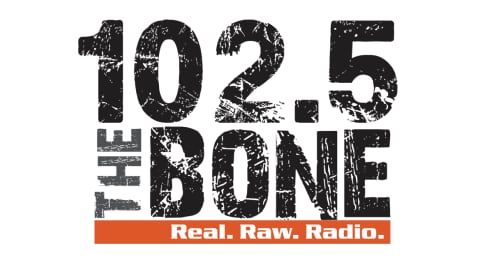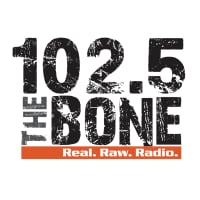In Orlando this week, a group of college athletics stakeholders are gathering for meetings. Many of these people are influential to building rosters, compensating athletes and steering the future of major college football and basketball programs.
They are not coaches, nor are they athletic directors or commissioners.
They are leaders of more than two dozen NIL collectives.
In a dose of convenient timing, The Collective Association, a trade association of booster-backed NIL collectives, is scheduled to convene its first-ever summit this week in Florida. The two-day event begins Thursday — two days after one of the association's leading members, the Tennessee-affiliated Spyre Sports Group, became the center of a publicized NCAA investigation over NIL-related allegations.
The investigation into Tennessee is the latest in what appears to be a sudden wave of NCAA enforcement action over NIL-related matters. The association levied penalties against Florida State last month and is investigating Florida as well.
Nearly 20 months into the NIL era, the governing body of college athletics is attempting to rectify years worth of widespread and quite obvious rule-breaking across the industry during a somewhat ambiguous time in college athletics. At the center of many of the cases are school-affiliated booster-led collectives, the third-party entities that sprung up as a way to compensate athletes through, what many college leaders contend, are phony endorsement and commercial deals.
Encouraged by its own member schools to take enforcement action on NIL transgressions, the NCAA is finally showing teeth.
In the NIL collective community, that has been met with a wide variety of reactions: anger, frustration, even relief or, simply, a shoulder shrug.
“The NCAA is grasping at straws,” said Russell White, the president of Oncoor, a marketing agency that has helped manage and build out several NIL collectives. “This is just them trying to hang on to whatever they can. They’ve passed some new rules contradicting old rules. They make it real murky to operate in this space.”
Soon enough, a court may bring clarity to the matter of rules: There may not be any at all.
The debate over NIL restrictions
As part of a lawsuit filed against the NCAA on Wednesday, Tennessee and Virginia attorneys general are seeking a temporary restraining order that would prohibit the NCAA from enforcing its NIL policy as it relates to inducements and tampering.
Granting such an order would lift NCAA NIL recruiting restrictions, permitting third parties and collectives to negotiate NIL deals with both high school prospects and transferring players and sign them to contracts before they sign a letter of intent or enroll.
Something similar transpired just last December, when a judge granted a restraining order in a suit brought against the NCAA by several attorneys general over the association's transfer policy. The order has, at least temporarily, opened the door for athletes to transfer an unlimited amount of times and play at their new school immediately.
The combination of the two creates a true unregulated, hotly competitive market.
“If you move the restrictions, there is no longer any reason for the schools to follow any rules. It’s going to be really bad,” said Jason Belzer, founder and CEO of SANIL, a company that manages collectives at 45 schools. “We know the system needs reform, but there are a lot of student-athletes going to be hurt by this. There are a lot of athletes who have poor representation. And now every kid is going to be an open-market free agent? It is absolute chaos. That’s a disaster.”
Not everyone agrees completely.
Lifting the restrictions on inducements and tampering over NIL matters would bring into light what is commonly done in the dark, some contend. The tampering and inducement rules are already being violated — in a way. Collective representatives and coaches must strike an awkward balance, often dancing around the NIL conversations with prospects as not to trigger potential violations while at the same time assuring them a deal awaits.
This can lead to misunderstandings between the two parties, something that then only comes to light once the prospect arrives on campus.
“I don’t remember any of my friends in college getting offers from JP Morgan or Goldman Sachs and not having a conversation with them before and knowing what their compensation is,” said Ingram Smith, CEO of the Florida State collective Battle’s End. “I know of no job in the country where you show up and then learn your compensation. It’s preposterous.”
The NCAA and its member schools have attempted to provide more clarity by releasing multiple versions of new guidance in the last two years, though many in the collective space contend that only adds to the confusion.
In an example of the complex situation, the NCAA’s latest NIL guidance continues to insist that schools cannot directly pay athletes for their NIL and yet, by this summer, part of NCAA president Charlie Baker’s “Project DI” proposal will permit schools to do just that.
Such a move satisfies a goal for some administrators by moving NIL “in-house,” said MAC commissioner Jon Steinbrecher, a long-standing member of the DI Council.
“If you would talk to most athletic directors, they’d like to see collectives go away and bring it in-house where they have control and oversight over that,” he said. “(Schools) are being, in some ways, held accountable for a lot of things going on around them that they often don’t have a lot of oversight of.”
That may well be the case for Tennessee, a school now fighting back against the charges and using the legal realm to do it.
The importance of the Tennessee case
The results of the lawsuit could establish a precedent as it relates to the NCAA’s governance over NIL matters. Does it have control or not?
The NCAA is likely tasked, in court, with proving a collective or school’s intent was to induce a prospect — a common-sense matter for some but something that must be backed by evidence in legal proceedings.
“Ultimately, one side or the other needs to win. Right now, we’re living in both worlds,” said Charlie Winfield, an attorney who founded Mississippi State’s collective, The Bulldog Initiative. “You’ve got schools playing by NCAA rules and schools out there playing by what they understand the law to be. You have the threat of rules, and people who try to abide by them are effectively being punished.”
Perhaps those rules should not only be created by those at NCAA member schools, suggested Blake Lawrence, the CEO of Opendorse, one of the country’s largest NIL platforms used by at least 40 collectives.
Lawrence is attending TCA’s summit in Orlando this week, where on the agenda is a discussion about standards and best practices among the group.
Should they have a voice in creating policy?
“There has to be a level of agreement of what is good and bad for the competitive environment of college sports from those in it like them,” Lawrence said. “They are competitive sons a guns, but if they are real about it, wouldn’t they agree that Georgia calling Alabama’s players and Ole Miss calling SMU’s players and Florida State calling Tennessee’s players is not good for each other? If there are rules set by those making moves in the market, maybe that’s OK.”
Much of the NCAA’s latest crackdown is rooted in evidence uncovered from tampering and inducements tips. That includes screenshots of text messages sent from a school’s coach or a school’s booster collective to a player on another college team, said Mark Hicks, NCAA managing director over enforcement.
“It works better for us when we’re able to capture that information,” Hicks told a group of administrators last month at the NCAA convention. “Kudos to those who have screen-shotted those things.”
The fifth stage of college recruiting
But is the NCAA too late or even wrong to begin enforcing rules during such a murky time in college athletics? Some believe that NIL is an era soon to be cast aside for a much more regulated and professionalized model.
Jim Cavale, the former CEO of INFLCR who founded AthletesOrg (AO), believes there have been four phases to recruiting in the history of college sports: century-old inducements that triggered the rise of NCAA enforcement; the scandal-plagued days of the 1970s and 80s; the first few months of legalized NIL and the last few months of NIL’s rapid evolution.
“There’s only one phase left,” he said. “It’s the gross revenue distribution to the athletes through collective bargaining agreements.”
Revenue sharing, or a similar concept, is at the center of ongoing dialogue among some of the industry’s most powerful leaders. They are searching for a new model that will both provide a long-term solution to athlete compensation as well as be used to potentially settle what could be a costly antitrust lawsuit, House v. NCAA.
Conversations among leaders continued just last week when the five major conference commissioners met with Baker in Washington D.C. to address their differences and potentially chart a course for the future. Whether that is together or apart remains a question.
Results of legal battles, such as the one presented in the Tennessee case, may shape the future of the NCAA and, thus, college athletics. They may further determine if the governing body has lost all of its authority.
Meanwhile, collective officials gathered in Orlando this week to chart their own course toward a new model.
Collectives are not “anti-enforcement,” said Walker Jones, leader of the Grove Collective at Ole Miss. However, the current model is not set up for the type of enforcement now transpiring across the country, he contends.
“Athletes and collectives are in precarious positions because of outdated policies and procedures,” Jones said. “Take for instance universities. There are inducements to regular students every day for academic performance in terms of research grants and scholarships. Why should student-athletes be any different?”


